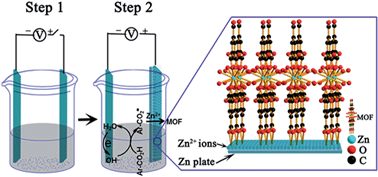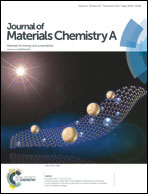Electrochemical preparation of metal–organic framework films for fast detection of nitro explosives†
Abstract
A facile electrochemical plating method by means of applying voltage onto zinc electrodes in a 1,3,5-benzenetricarboxylic acid (H3BTC) electrolyte has been developed to prepare fluorescent MOF films (Zn3(BTC)2). The composition of as-prepared MOF films is confirmed by powder X-ray diffraction (PXRD) and the surface morphology is examined by scanning electron microscopy (SEM). Voltage and fabrication time are found to be the key parameters for the formation and morphology control of MOF films. Additionally, the as-prepared MOF films, due to their evident fluorescence, are explored for potential applications in detecting nitro explosives with a detection limit as low as 0.5 ppm. The fluorescent MOF films can be further applied to distinguish nitro explosives by varying the solution concentration. Moreover, the MOF films exhibit excellent reusability in consecutive nitro explosive detection reactions. It has been demonstrated that the electrochemical plating method reported here offers a reliable and efficient way to prepare MOF films with controllable morphology for nitro explosive detection.


 Please wait while we load your content...
Please wait while we load your content...